15 Beautiful Public Housing Developments From Around the World
When you picture public housing, what are the first words that come to mind?
Probably not “joyful” or “beautiful.” No, public housing usually conjures up images of heavy tenement blocks or dark brick high-rises with cramped spaces and little natural light — buildings so grim you’d be forgiven if you mistook them for prisons. And indeed, in the U.S. and many other countries, it’s generally the case that people end up in public housing of necessity, not desire.
When asked why housing projects are so uninspiring, most people point to cost. After all, governments are required to be responsible with their citizens’ tax dollars, and using cheap materials and bare bones designs are certainly a way to work with a tight budget.
Why is the design of Public Housing Developments so depressing?
But when I started working on Joyful, I began to wonder. Colored paint doesn’t cost any more than beige, so why are these spaces so universally drab? Over time, I came to realize that it has more to do with societal attitudes toward the poor than with actual cost constraints.
In the “pull yourself up by your bootstraps” ethos of American culture, being poor is viewed as an individual failing, rather than a collective one. Housing for the poor, elderly, and mentally ill is often billed as a “handout” rather than as a right, a drain on society’s resources rather than an investment in the communal good. Because of this, the punitive aesthetics of public housing are not a byproduct of cost-conscious production. They’re a defining quality, intended as a deterrent and a punishment for the sin of not being able to make it on your own.
This idea is reinforced in any part of our society that deals with the poor, from the tortuous paperwork that burdens people seeking public assistance to the restrictions on WIC (food stamps) programs that prevent them from being used on any foods that might be considered treats. The measures are treated as protective, a way to encourage responsibility and good nutrition. But really, they’re an artifact of the belief that people are always looking to take advantage. And the only way to prevent this is to make poverty as miserable and shameful as possible.
Why does it matter if public housing is ugly?
Likewise, the ugliness of public housing is a feature, not a bug. But the consequences of treating housing as a reward rather than a right are evident. The crime and hopelessness in these places is exacerbated by the bleak design. The architecture itself becomes an obstacle to those who are looking to improve their circumstances, and a torment to those whose circumstances make them unable to do so. We’ve seen this through seminal studies that show, for example, that greenery around public housing developments decreases intra-family aggression and violent crime (Kuo and Sullivan, 2001, among others). And, even without invoking the flawed broken windows theory, we know from research that distressed environments tend to invite behaviors such as littering and vandalism.
We look to our environment for cues about how to behave. And on a deeper level, I think we look to our environment for cues about how to see ourselves. Our sense of self-worth, agency, and belonging are all deeply influenced by our home environments.
Seen this way, the bleakness of public housing is both an affront to the dignity and an impediment to the well-being of those who rely on it.
15 Beautiful Public Housing Developments From Around the World
We can do better. In fact, some architects and developers already are. In this post, I’m sharing a collection of beautiful, vibrant, joyful public housing developments that break the mold and prove that housing projects can be cost-effective and desirable places to live at the same time.

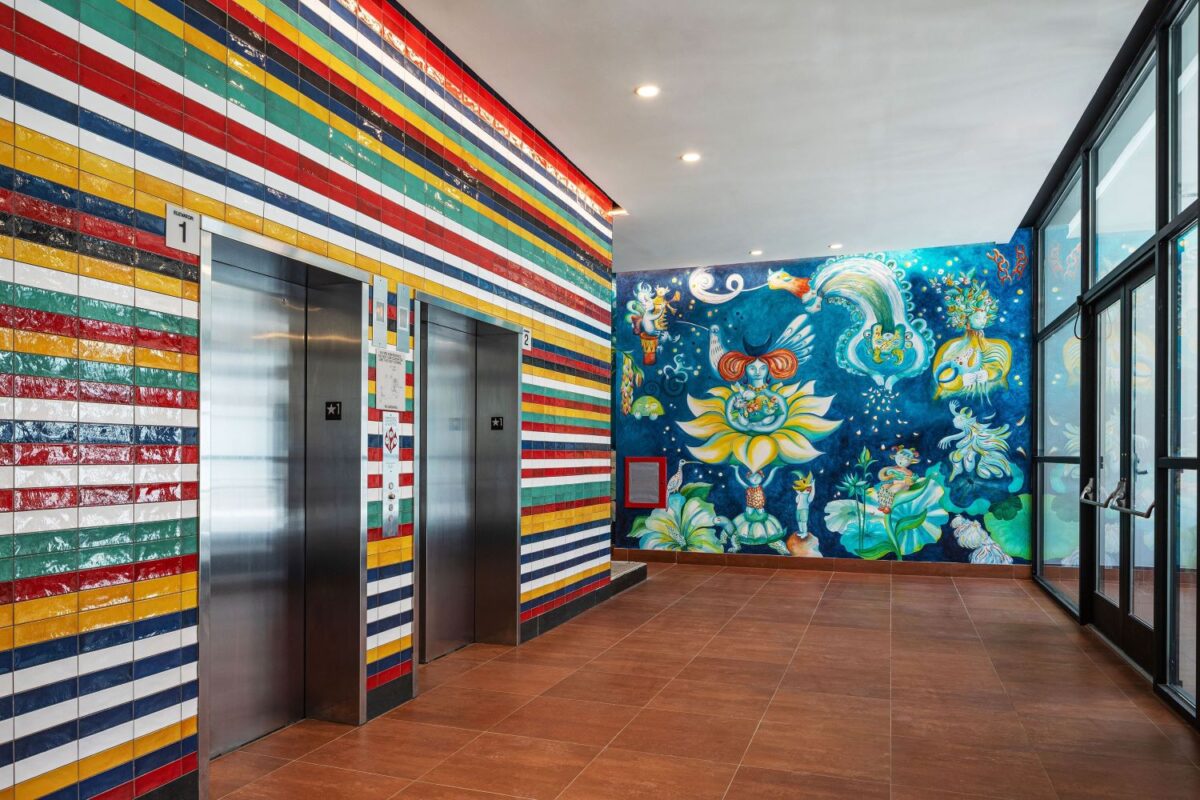
Images: Michael Moran via Curbed
El Borinquen – Bronx, New York, United States
Developed by the nonprofit organization Comunilife and designed by Alexander Gorlin, El Borinquen was built in 2020 as a supportive housing unit for youths aging out of foster care and homeless individuals with special needs.
Color plays a big role in the design of El Borinquen. As the project’s architect, Alexander Gorlin, notes, “Color was the way of animating the façade and giving variety in an affordable manner.” It also is used to cultivate belonging and stability, and as a wayfinding tool. Each of the different floors is painted a different color in the vibrant palette to ease navigation and give residents a sense of place.
In the words of Gorlin, “Everyone deserves to live in a well-designed house.”
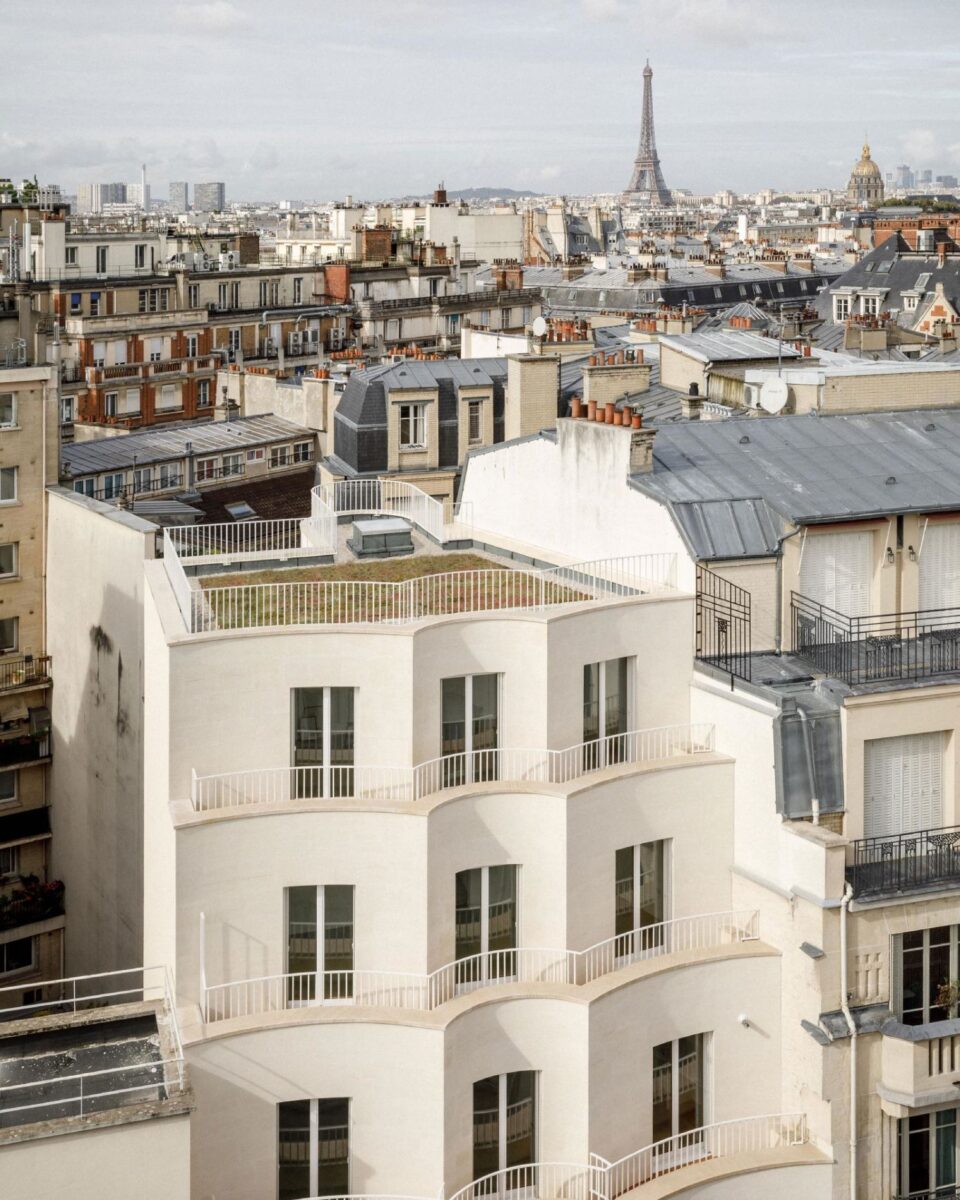
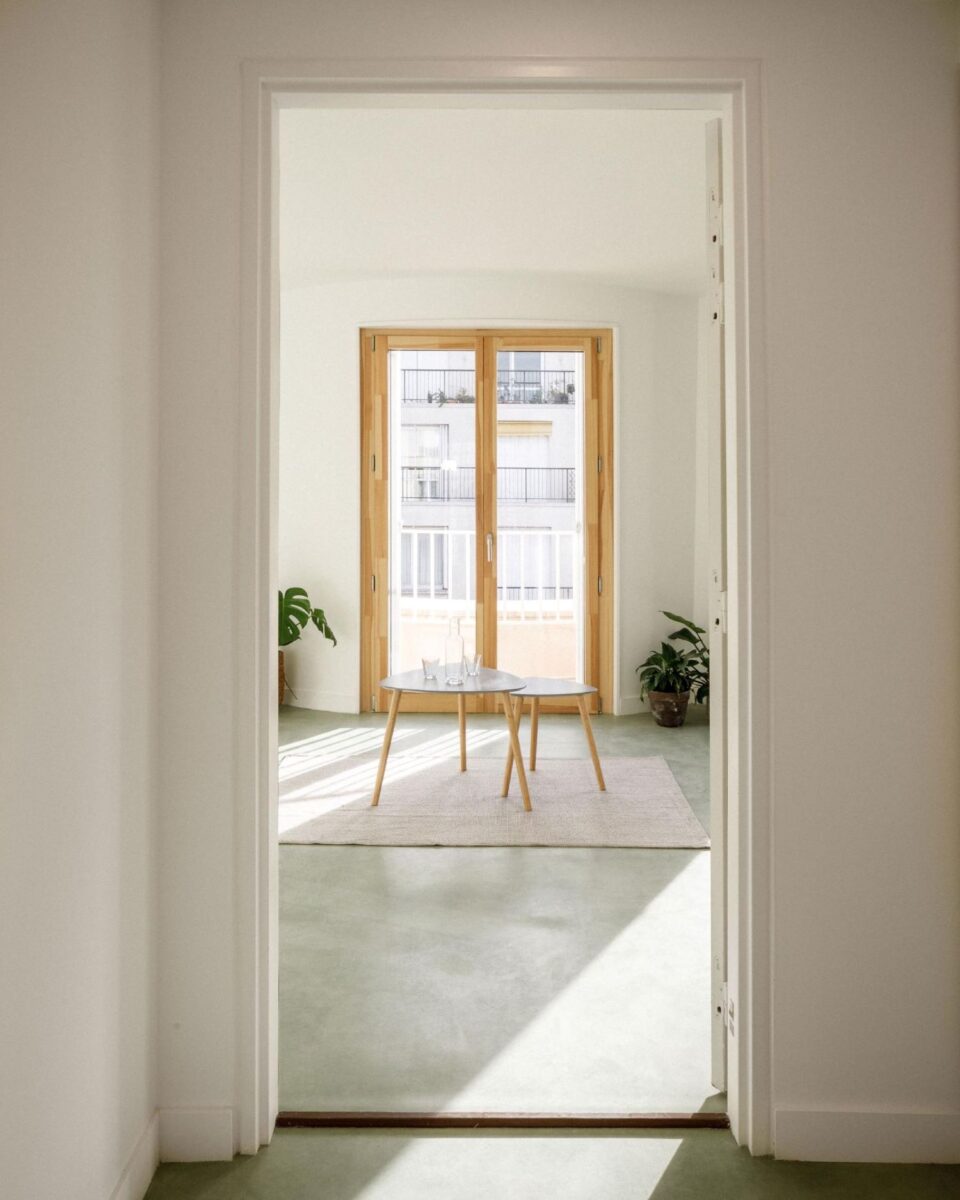
12 Rue Jean-Bart – Paris, France
Designed by Jean-Christophe Quinton in 2022, this social housing project is known for its curvy, scalloped facade. “Conceptually, the project aims to bring up its architectural quality to the same level as that of its refined neighbors, without any discrimination and with fewer financial resources,” French architect Jean-Christophe Quinton said in an interview about the design.
Curves are a rarely-seen feature in public housing (and even in more mainstream buildings). Their use here helps overturn the perception that public housing must be bare bones. Care was also taken in the layout to ensure that light and views are maximized throughout the building. The light-filled apartments have been praised by residents and the public for breaking the mold of typical, often drab, public housing.


Images: James Florio via Arch Daily
Independence Library and Apartments – Chicago, Illinois
Constructed in 2019 by John Ronan Architects, this combination of a public library and affordable housing was lauded for its creative utilization of space and promotion of literacy. The unique approach was welcomed by the community, demonstrating that public housing can coexist with and benefit from other public amenities.
The colorful recessed balconies break up the monotonous façades of the buildings in this area. They allow residents to be able to identify their homes from the street, providing a strong sense of place and individuality that is so often lost in affordable housing.


Images: Michael Elkan via Arch Daily
Duke Residential Project – Vancouver, British Colombia, Canada
Designed by Acton Ostry Architects in 2021, this project aimed to make affordable housing appealing through modern design and environmentally sustainable methods. The overall design is fairly simple, but by keeping the facade a clean white (rather than gray or beige) and adding pops of color on the doors, the space feels remarkably joyful. The architects pushed the apartments to the edges of the lot to maximize the density of apartments, creating a central trapezoidal atrium that makes the space dynamic.
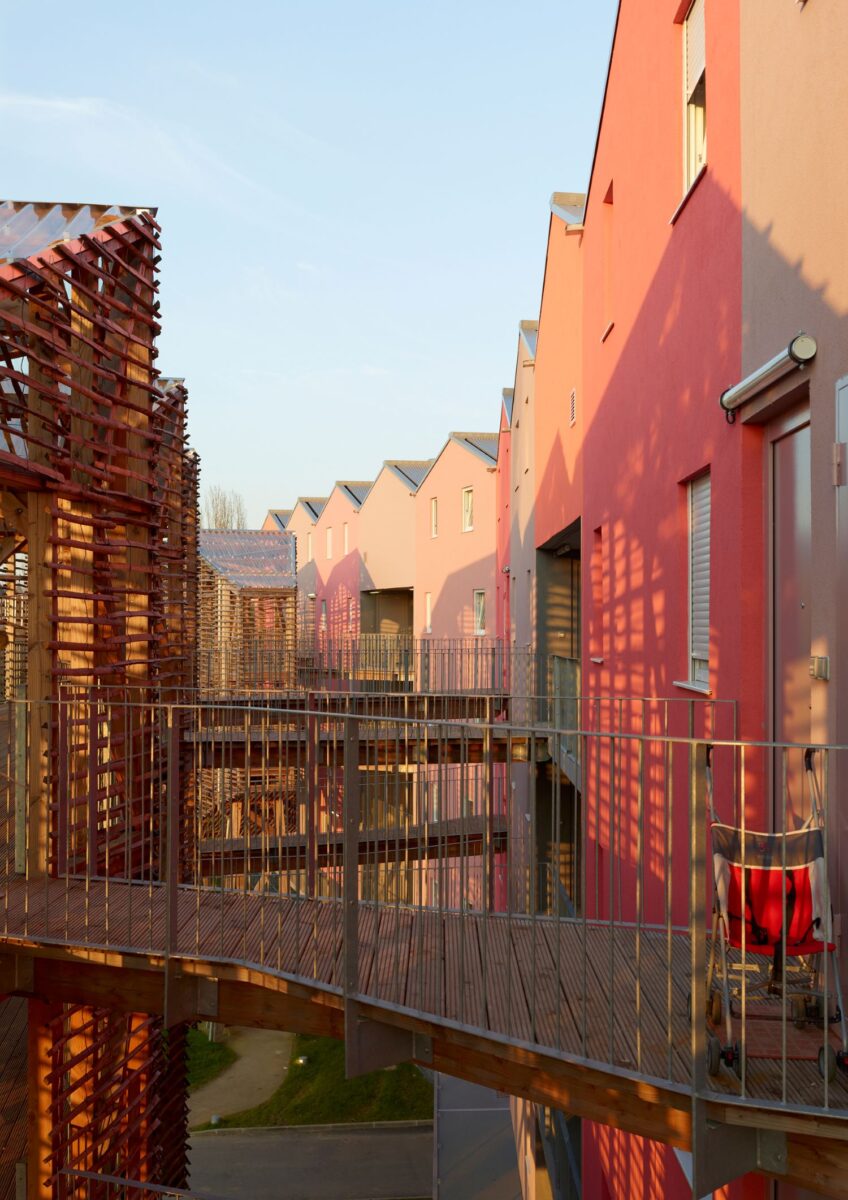
Image: Stephane Chalmeau via Architectural Review
Boréal – Nantes, France
Created by Tetrarc in 2023, Boréal is a visually striking structure featuring gabled roofs and contrasting colors. The backside of the building is a greenhouse façade, giving each resident their own greenhouse terrace to fulfill a version of the “little-house-with-a-garden dream” held by many French people. In order to avoid the dingy hallway spaces common to public housing buildings, the walkways are externalized and connected to the apartments through treehouse-like footbridges.
The architects sought to challenge traditional perceptions of public housing by creating a building with a distinct, avant-garde aesthetic, and by incorporating social diversity. Boréal was designed for socioeconomic mixing by allocating just over half of the units as social housing rentals and reserving the rest for first-time buyers.

Image: Alejandro Aravena/Elemental via Pacific Standard
Punta del Sol, Chile
Led by architect Alejandro Aravena, Elemental constructed this public housing project in 2019. Aravena, a Pritzker prize-winning architect, designed these affordable homes with a focus on flexibility and the intention for them to be customized by residents. These homes can grow and change alongside the evolving needs and financial circumstances of the residents, providing a sense of empowerment and individualization for lower-income families. The result is a lively, evolving community where each dwelling reflects the personality of its occupants.
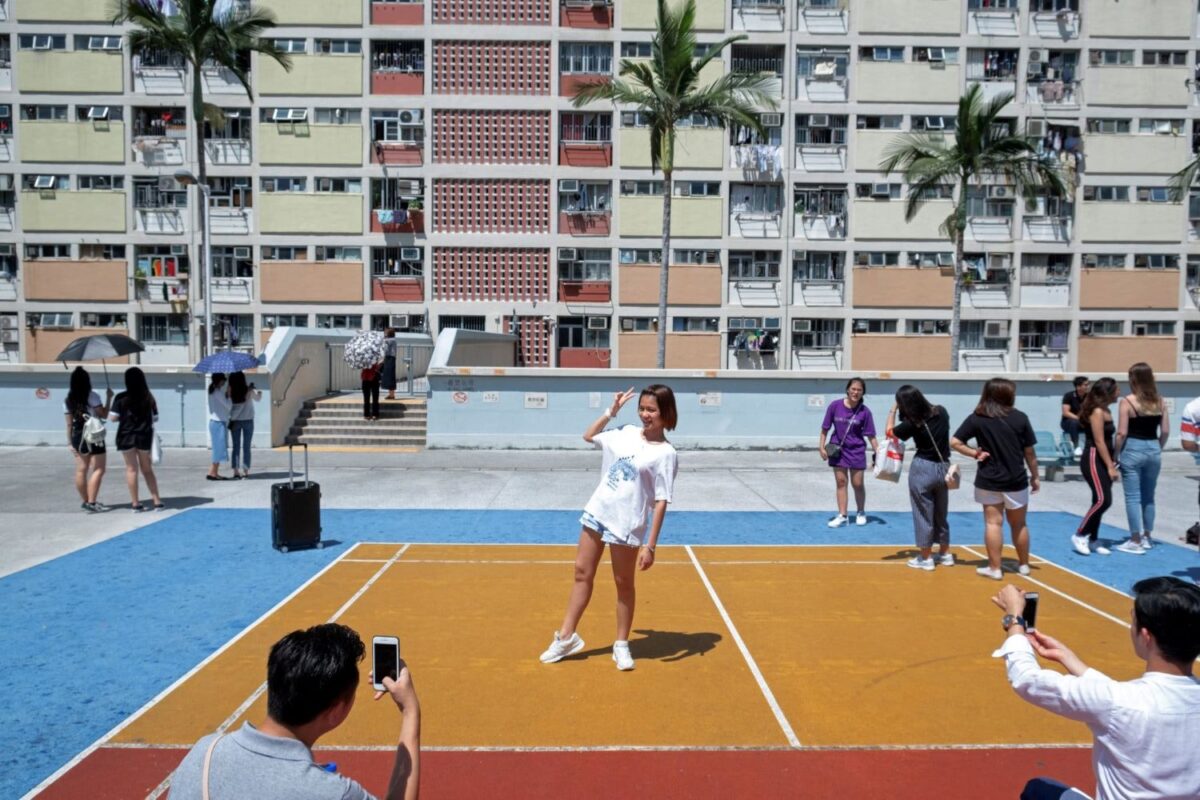
Image: Lam Yik Fei via The New York Times
Choi Hung Estate – Kowloon, Hong Kong
Choi Hung Estate was built in 1964 to provide more permanent housing after a fire displaced 53,000 people. The colorful exterior—Choi Hung means “rainbow” in Cantonese—of the high-rise apartments is characteristic of the modernist aesthetic popular in architecture when the estate was built, making the façade a popular photo backdrop for tourists. Public housing does not have the same negative connotation in Hong Kong as it does in the United States, partly because almost half of the population lives in government-provided housing.

Image: Michael Moran via Dezeen
Boston Road – Bronx, New York, United States
Designed by Alexander Gorlin Architects in 2016, the same architect behind El Boriquen, Boston Road houses low-income adults and formerly homeless people, many of whom are seniors living with HIV/AIDS. The architects took unusual care to emphasize both private rooms and communal areas, including a bicycle storage area, computer lab, patio and garden, and fitness area. The anodized aluminum panels on the exterior add blocks of color to make Boston Road unique and stand out in the gray urban landscape.
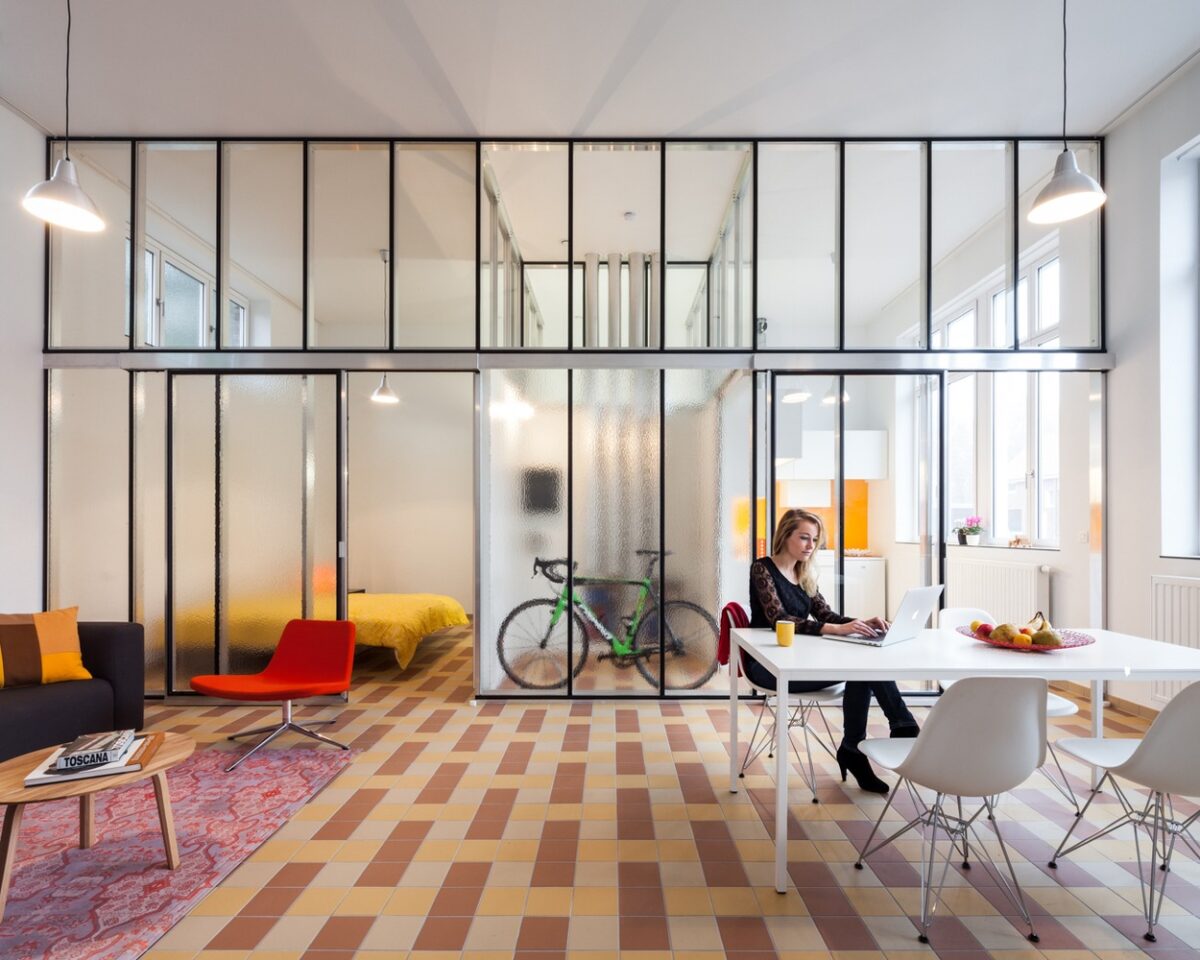
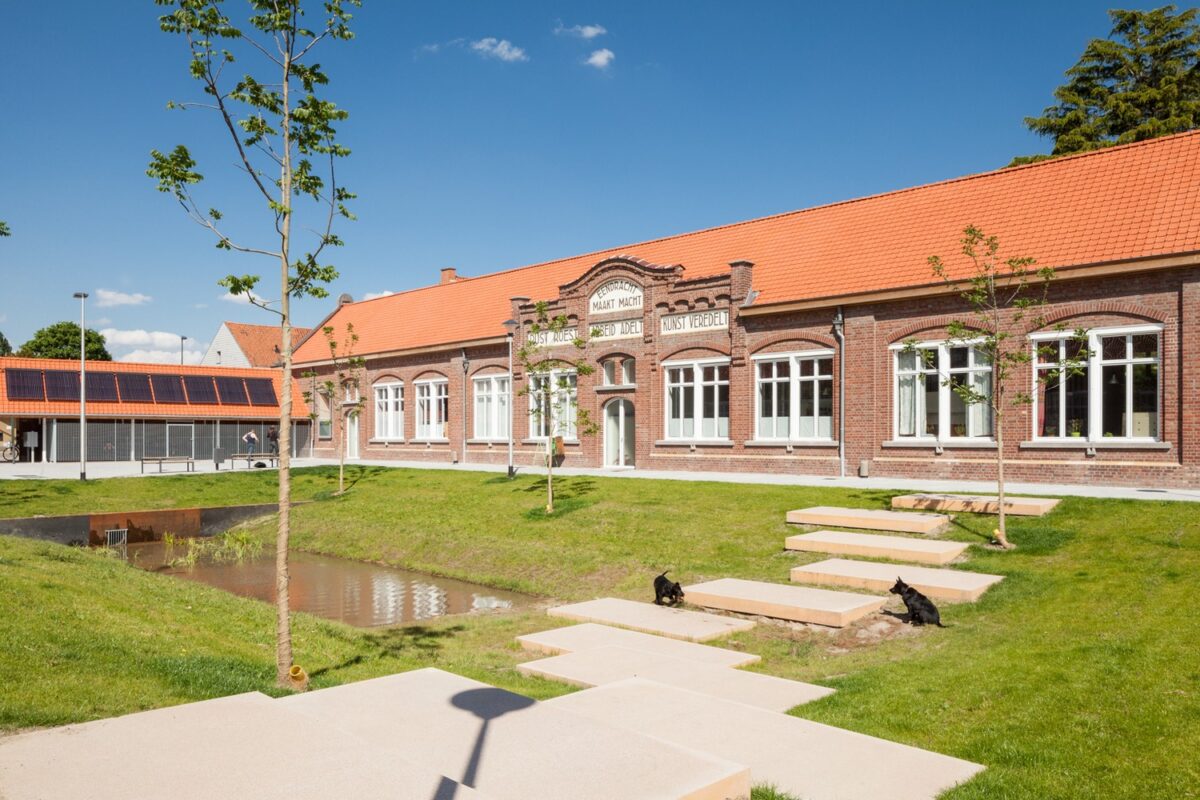
Images: Tim Van de Velde via Arch Daily
Heilig Hartschool – Izegem, Belgium
Architect Lieven Dejaeghere converted this old school into a social housing facility in 2013. The historic exterior of the building was preserved, but the interior was completely transformed into apartments with bold pops of color. In order to create housing for single people, each classroom was modified by adding glass walls, creating separate living spaces while keeping visible the original proportions of the classroom. All units have access to the central outdoor space, formerly the school’s playground.

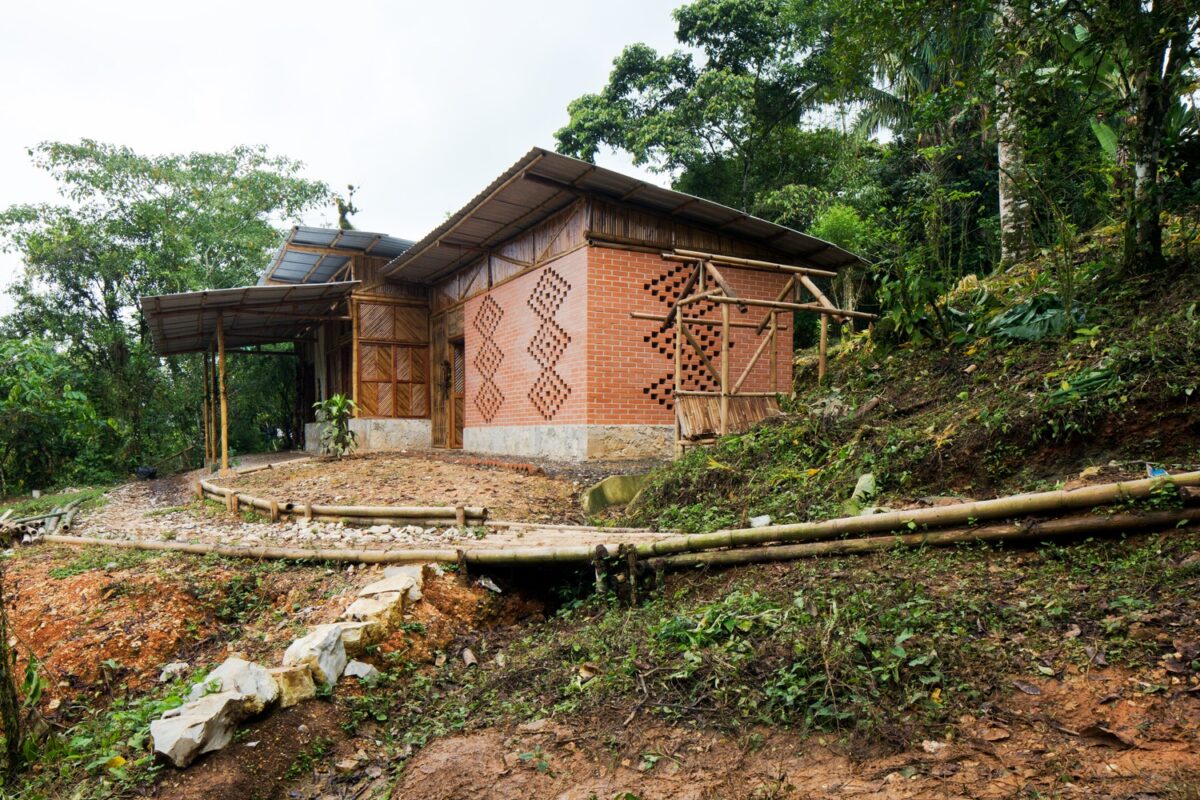
Images: Onnis Luque via Arch Daily
Tepetzintla, Mexico
Built in 2015 by Comunal Taller de Arquitectura, this social housing project used brick and locally-grown bamboo that was getting in the way of coffee and corn plantations to create much-needed housing in the Tepetzintla region. The architects met with families who lived in the region to learn about their customs and how they live, designing the houses with those needs in mind. The building of the houses was a community effort. Having learned the technical skills needed to build their homes, residents were later able to build a school for their community using the same materials.
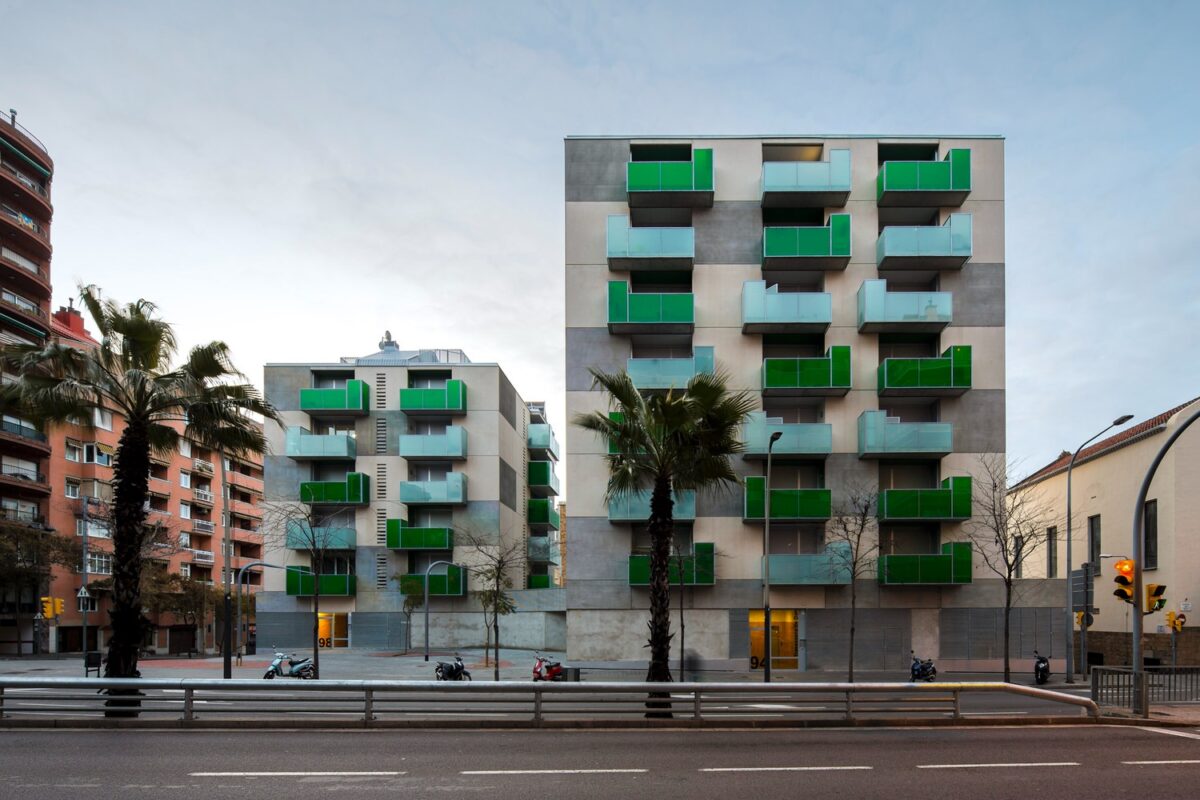
Image: Simon García via Arch Daily
Santa Madrona – Barcelona, Spain
These affordable apartments designed by Pich-Aguilera Architects in 2013 are focused on sustainability. Using the techniques of bioclimatic architecture, the Santa Madrona apartments are designed to reduce energy demand through aspects like the large balconies that better regulate climate and maximize natural light. The balconies add a pop of color and form the building’s identity in a large and architecturally diverse city.

Image: Naho Kubota via Bloomberg
Bay State Cohousing – Malden, Massachusetts, United States
These cohousing apartments were conceived by the architectural studio French 2D, founded by sisters Jenny and Anda French. The peach exterior with mint staircases bring a fresh twist to the architectural style drawn from the surrounding Boston houses.
In order to build community, all units are accessed through a single entrance to a common house that leads to the internal courtyard. Residents of all generations share various amenities including a courtyard, guest room, yoga studio, media center, music room, and garden terraces, all of which encourage communal living in a way that combats social isolation.
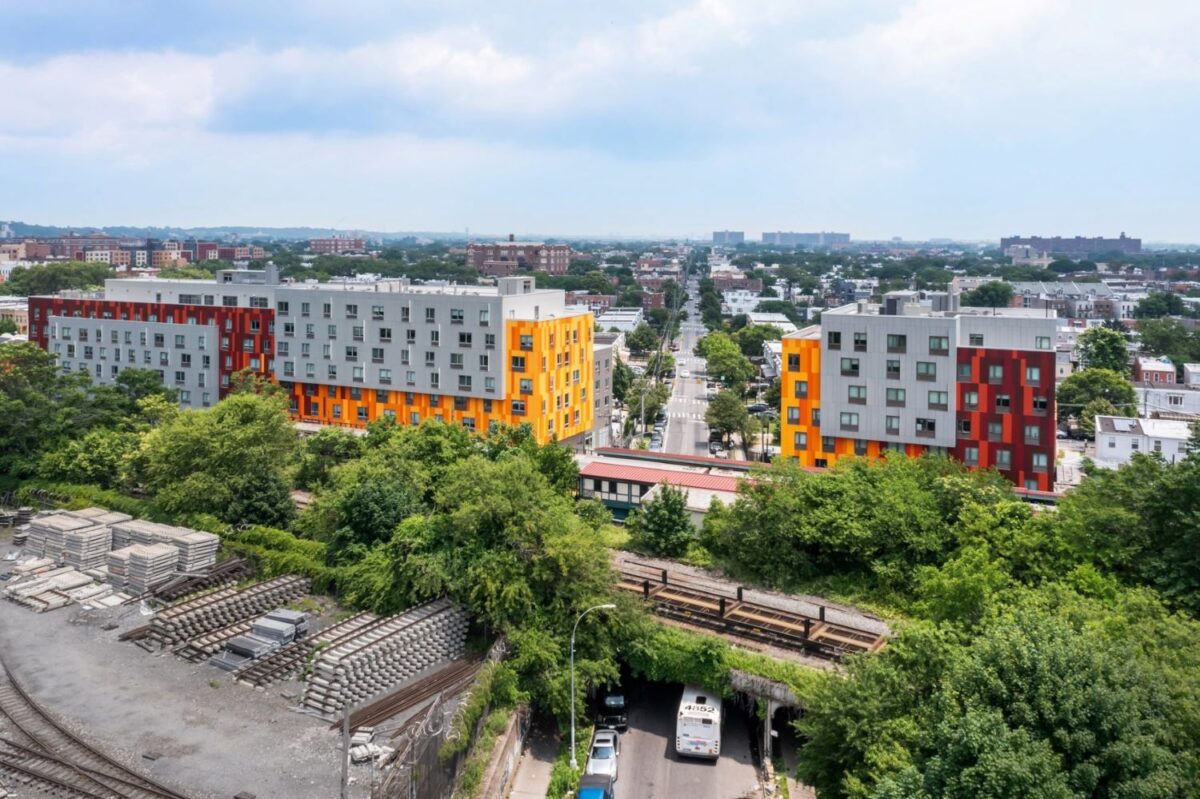
Van Sinderen Plaza – Brooklyn, New York, United States
Built on a vacant lot by architecture firm Gluck+, this affordable housing building has a brightly colored facade that adds boldness and texture to a building type that is typically very repetitive. This building provides housing in a Brooklyn neighborhood where more than half of the residents live below the poverty line.
In addition to the apartments, Van Sinderen Plaza has a retail and dining area, a community daycare, and a public outdoor space, involving the community beyond just the residents. The community at large also benefits from wider sidewalks created by recessing the ground floor by ten feet.

Image: Manuel Sá via Designboom
Paudalho Popular Houses – Paudalho, Brazil
NEBR Arquitetura designed this affordable housing project with an emphasis on simplicity. This focus on clean lines and rectilinear forms “re-questions hostile dimensions and energetic principles of spatial economy stigmatized to the popular house,” as explained by the architects.
The straightforward design allowed for the Paudalho Popular Houses to be built by local labor in just 120 days. Each of the four units has a walled-in outdoor space and a colorful facade that complements the bright white and geometric style.

Image: Morley von Sternberg via Peter Barber Architects
Holmes Road Studios – London, England
Designed by Peter Barber, a longtime champion of making affordable housing beautiful, Holmes Road Studios is a homeless facility that subtly brings joy through the repeated elements, arches, and texture. The “crinkle crankle parapet,” circular windows, and colorful doors that pop against the brick are all examples of repeated elements that bring a sense of harmony.
Barber works at a human scale. So often housing projects are massive and monotonous, but he typically creates smaller developments that feel “house-like” and intimate. Barber’s intention for the garden exemplifies this intimacy:
All of the rooms look out over the garden. We imagine a group of residents working with a gardener to create and maintain an intensely planted and beautiful garden. There would be an apple tree or two, potatoes, green veg, soft fruit, herbs, a greenhouse, a potting shed and a sunny spot to sit and rest. We think there ought to be a little room/shed in the garden for private chats (1:1) and counselling. The garden creates a homely, domestic atmosphere in the hostel. It will give participating residents an interest and outlet for their energy. It will help to foster a sense of belonging, self worth and empowerment amongst residents. It will provide people with an opportunity to develop gardening skills and encourage them to think about nutrition.
By creating a beautiful, welcoming housing facility for formerly homeless people, Barber brings a sense of dignity that is so often missing from these spaces.
For more joyful design for public spaces, check out these posts:
- How To Design a Better School Building
- 11 Public Art Installations That Create Big Joy
- Imagining a More Joyful Children’s Hospital
This post was written with contributions from Ava Booydegraaff.



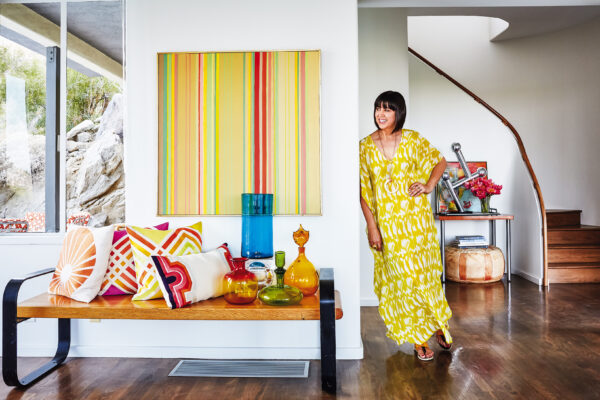


Discussion (1 Comment)
Love your site gives me joy ideas and inspiration
Thank you